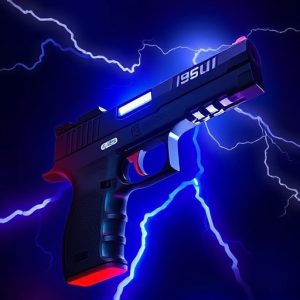Voltage in Stun Guns: What You Need to Know
Voltage is a critical factor in the performance and safety of stun guns, representing the energy del…….
Voltage is a critical factor in the performance and safety of stun guns, representing the energy delivered by the device. Higher voltage generally corresponds to increased effectiveness in temporarily incapacitating attackers, but it must be matched with intended use to ensure safety without harm. Understanding voltage specifications is paramount for choosing an effective yet safe self-defense tool, highlighting its importance in personal safety equipment.
Are you curious about the power behind stun guns? Understanding voltage is crucial when it comes to these personal defense devices. In this article, we’ll demystify stun gun functionality by delving into the science and specifications that matter. We’ll explore how voltage plays a key role in their effectiveness, what influences it, and why it’s essential for your safety. By the end, you’ll have a comprehensive view of what makes stun guns tick and whether displayed voltage truly matters.
What is Voltage and How Does it Affect Stun Guns?
Voltage, in simple terms, represents the force or pressure behind electric current flowing through a circuit. It’s measured in units called volts (V) and determines the energy delivered by an electrical source. When it comes to stun guns, voltage plays a pivotal role in their effectiveness. Stun guns emit high-voltage electrical charges designed to disrupt muscle control in an attacker, temporarily incapacitating them. The amount of voltage matters; higher voltage can deliver more energy, potentially increasing the likelihood and intensity of a stun.
However, it’s crucial to note that not all stun guns display their voltage directly. Some models only indicate whether they’re activated or provide a general strength level rather than a specific volt measurement. Yet, understanding voltage remains essential for users to grasp the device’s capabilities and safety considerations. Knowing how much voltage is being emitted can help individuals make informed decisions about usage, especially in situations where de-escalation might be necessary before resorting to more powerful stun settings.
The Science Behind Stun Gun Functionality
The functionality of a stun gun relies on its ability to deliver an electric shock, temporarily incapacitating the target. This is achieved through a simple yet powerful mechanism that utilizes voltage and current. When activated, a stun gun creates a high-voltage, low-amperage electrical pulse, which is then discharged onto the body of the intended subject. The impact of this pulse disrupts the normal electrical signals transmitted by the nervous system, causing muscle spasms and temporary paralysis.
The concept of voltage plays a pivotal role here as it determines the intensity and effectiveness of the stun. Higher voltage generally results in more powerful shocks, ensuring faster and more efficient incapacitation. However, it’s not just about raw power; the design and quality of the stun gun’s electrical components directly influence its ability to deliver a consistent and safe jolt. This is why understanding the interplay between voltage and current is essential for creating reliable and effective self-defense tools.
Understanding Stun Gun Specifications and Safety
When considering a stun gun, understanding its specifications is crucial, especially when it comes to voltage. The voltage output is a critical factor as it determines the weapon’s effectiveness and safety features. Each stun gun model displays its voltage rating, which refers to the electrical charge delivered upon activation. This information is vital for users to grasp, as different voltages offer varying levels of protection and impact.
The voltage can range from lower settings suitable for less intense situations to higher voltages designed for more powerful responses. Higher voltage doesn’t always mean better; it depends on personal needs and safety considerations. It’s essential to match the stun gun’s voltage with the intended use, ensuring it provides adequate protection without causing unnecessary harm or risk of injury to yourself or others.


